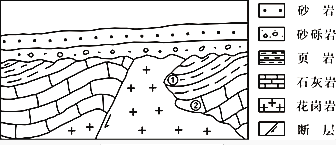The US navy boarded an apparent pirate (海盗) ship in the Indian Ocean and kept 26 men for questioning, the navy said Sunday.
The 16 Indians and 10 Somali men were aboard a traditional dhow (单桅三角帆船) that was chased and seized Saturday by the US guided missile destroyer (驱逐舰) USS Winston Churchill, said Lieut I.eslie Hull-Ryde of US Naval Forces Central Command in Bahrain.
The dhow stopped fleeing after the Churchill twice fired warning shots during the chase, which continued no more than 87 kilometers off the coast of Somalia, the navy said. US sailors boarded the dhow and seized a cache (暗窖) of small arms.
The dhow's crew and passengers were being questioned Sunday aboard tim Churchill to determine which were pirates and which were lawful crew members, Hull-Ryde said.
Sailors aboard the dhow told navy investigators that pirates hijacked (抢劫) the ship six days ago near Mogadishu and afterwards used it to stage pirate attacks on merchant ships.
The Churchill is part of a muhinational task force patrolling (巡逻) the western Indian Ocean and Horn of Africa region to thwart (阻止) terrorist activity and other lawlessness during the US-led war in Iraq.
The Navy said it captured the dhow in response to a report from the International Maritime (海事的) Bureau in Kuala Lumpur on Friday that said pirates had fired on the MV Delta Ranger, a Bahamian-flagged bulk carrier (货轮) that was passing some 320 kilometres off the central eastern coast of Somalia.
Hull-Ryde said the navy was still investigating the incident and would discuss with international authorities what to do with the men kept aboard the Churchill.
72. Which of the following statements about the dhow's crew is right?
A. Among them were both lawful and lawless members.
B. Their ship was stopped by the police in the African region.
C. They are all from India.
D. They are pirates attacking merchant ships.
73. "Churchill" in the text is _______.
A. a late UK prime minister B. an official of the US navy
C. a military ship D. the title of a military action
74. Which of the following correctly describes how the dhow was captured?
a.Warning shots were fired b. Merchant ships were attacked by pirates.
c. The dhow was hijacked, d. US sailors boarded the dhow.
A. d-a-b-c B. c-b-a-d C. b-a-d-c D. a-b-d-c
75. How did the US navy find the dhow?
A. They found the dhow by accident when patrolling the sea.
B. They found the dhow after receiving reports from some merchants.
C. They found the dhow after being informed about it.
D. They found the dhow after receiving messages from the sailors on the dhow
小题1:A
小题2:C
小题3:B
小题4:C

